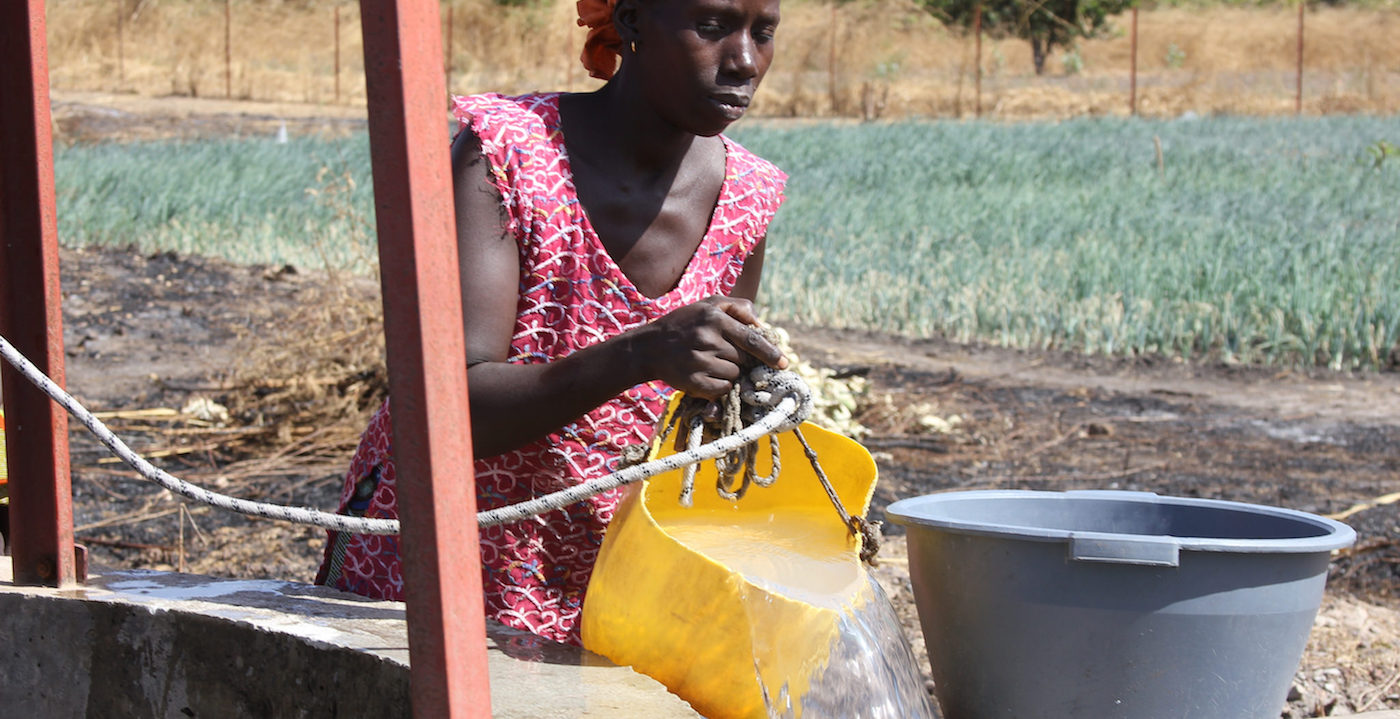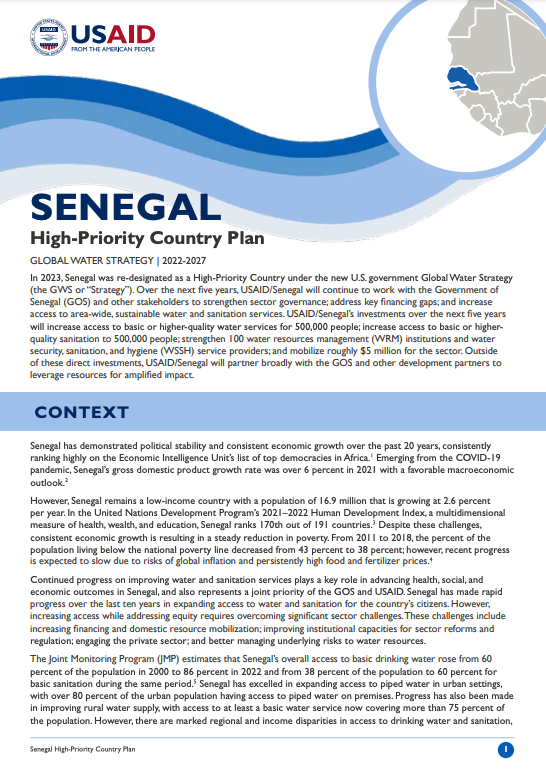Overview
In 2023, Senegal was re-designated as a High-Priority Country. USAID is working with partners in Senegal to:
- Increase access to basic or higher-quality water services for 500,000 people
- Increase access to basic or higher-quality sanitation to 500,000 people
- Strengthen 100 water resources management (WRM) institutions and water security, sanitation, and hygiene (WSSH) service providers
- Mobilize roughly $5 million for the sector



